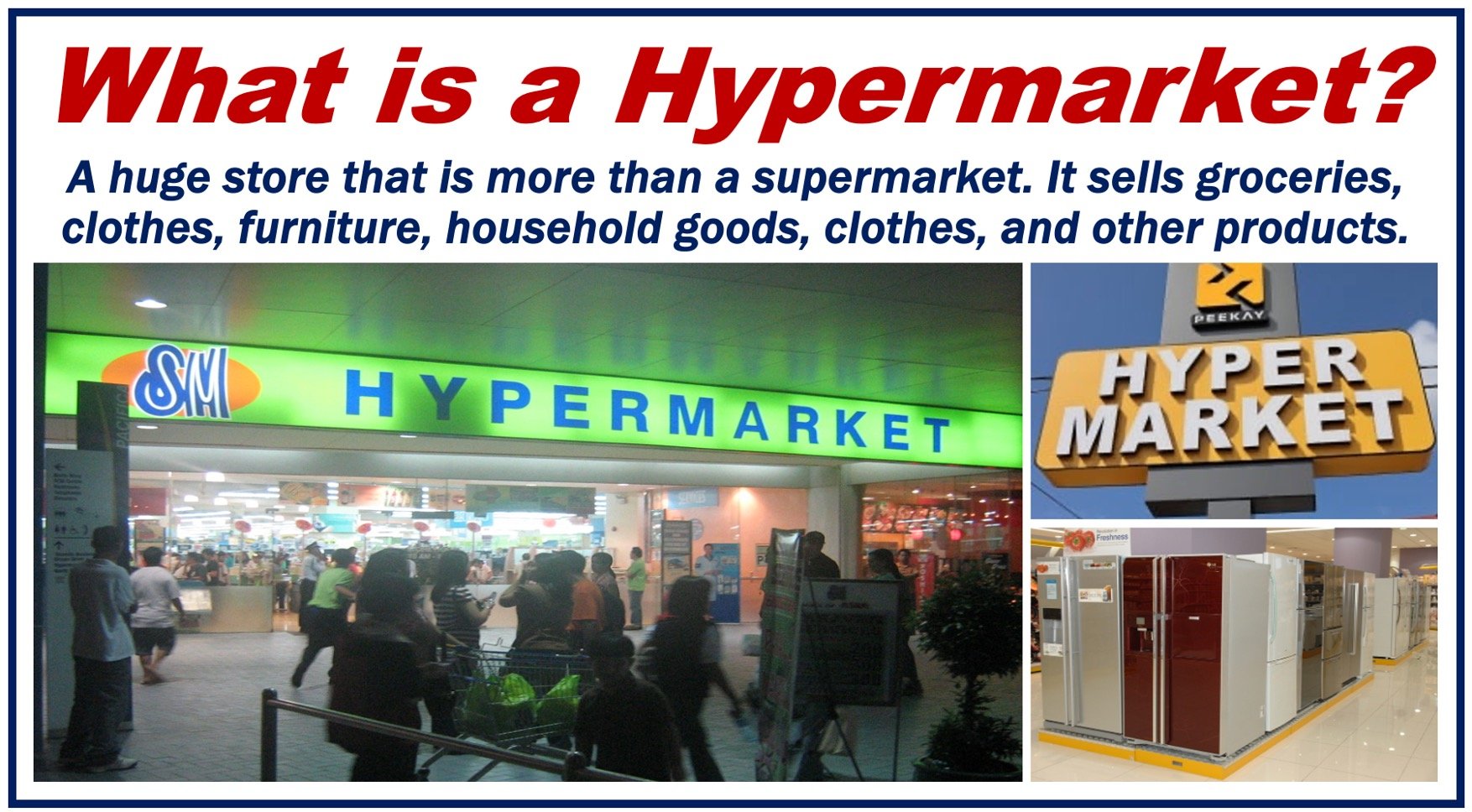What is a hypermarket?
A Hypermarket is a huge retail space. It is a combination of a department store and a supermarket.
Hypermarkets are much larger than supermarkets or department stores regarding the range of products they offer. Under one roof, you can buy groceries, white goods, brown goods, clothing, shoes, motorbikes, lawnmowers, and other general merchandise.
White goods, which are also known as major appliances, include washing machines, dishwashers, freezers, and refrigerators. Brown goods, also known as consumer electronics, include audio equipment, computers, game consoles, and televisions.
Wikipedia.org has the following definition of the term:
“A hypermarket (sometimes called a hyperstore, supercentre, or superstore) is a big-box store combining a supermarket and a department store.[1] The result is an expansive retail facility carrying a wide range of products under one roof, including full grocery lines and general merchandise.”
Hypermarkets began in France
The concept of hypermarkets first appeared in France in the 1960s. In France, they are called “hypermarchés.”
Today, they exist all over the world. They are especially popular on the outskirts of towns where there is enough space for large hangar-like retail areas and parking.
They are often part of a larger retail chain and offer competitive prices and the ability to buy products in bulk.

Vocabulary usage in the US and UK
In the US, the terms “supercenter” or “big-box store” are more common than “hypermarket.” These refer to large retail establishments that sell a wide array of goods including groceries, apparel, and household items.
In the UK, the term “superstore” is more prevalent than “hypermarket.” It is used to describe very large supermarkets that often include a range of non-food items.
The term “hypermarket” is understood in both countries, but it’s not as commonly used in everyday language as it is in other parts of the world.
Hypermarkets offer convenience
People who like hypermarkets say they offer convenience. Shoppers can save time by purchasing a wide variety of items in a single trip.
Most of them provide additional services such as pharmacies, banks, food courts, dry cleaners, and even car repairs, making them a great one-stop destination for a multiple of needs.
High-volume, low-margin sales
Hypermarkets operate on the principle of low-margin, high-volume sales. In other words, they make a small profit on a large number of goods rather than a large profit on fewer items.
That is why prices are lower in hypermarkets than in other types of stores. This offers a significant advantage for budget-conscious shoppers.
However, some people prefer not to purchase items in large quantities and may opt for smaller stores where they can buy what they need in the exact amounts they desire.
A huge hypermarket
The Monoprix hypermarket in Doha Festival City, Qatar, is one of the world’s largest. Its doors were open to the public in 2017 and offers more than 35,000 different items with a 7,000 square meter (10, 764 sq ft) space.
Monoprix S.A. is a major French retail chain, with its headquarters in Clichy, Hauts-de-Seine, France, near Paris. The company owns more than 700 stores.
Online shopping
The rise of online shopping has presented challenges to brick-and-mortar stores, including hypermarkets.
The shift in consumer behavior has pushed hypermarkets to adapt by enhancing their own online presence and offering click-and-collect or home delivery. However, as the number of people who shop offline continues to decline, what will happen to those millions of square meters of hypermarket retail space?

